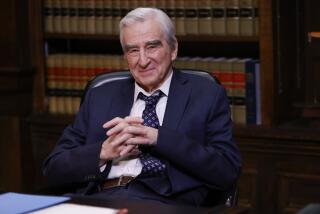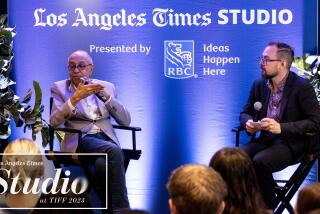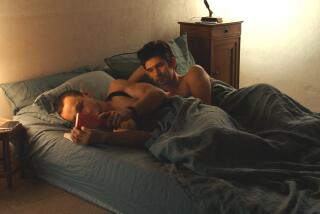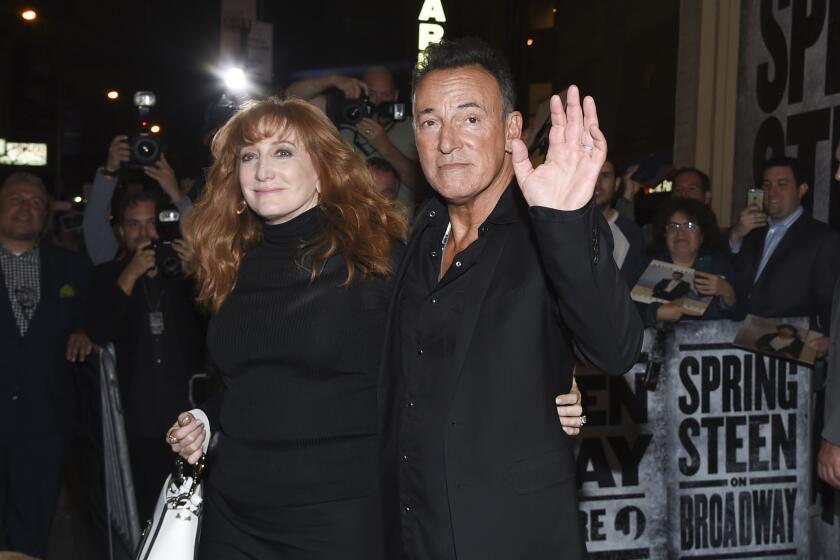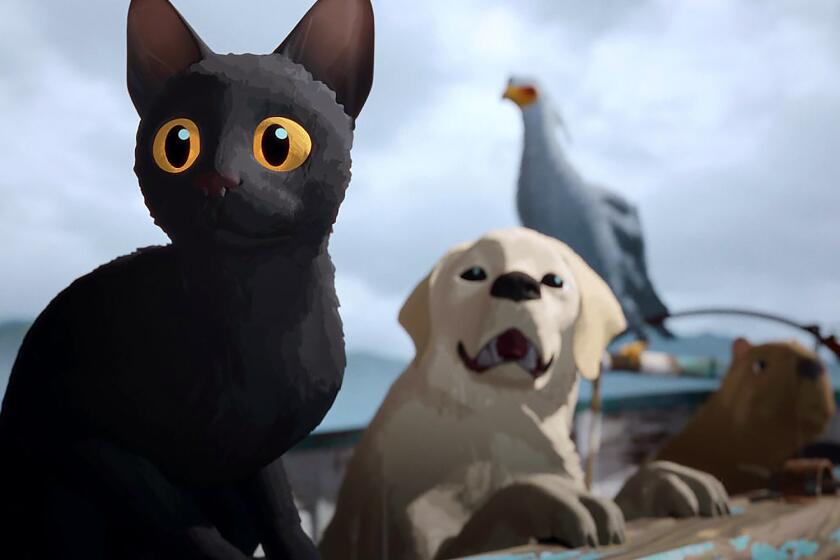After ‘Midnight’
Regarding “Why Joe Buck and Ratso Live On,” by Kenneth Turan (Feb. 20):
While Turan’s commentary on “Midnight Cowboy” was excellent in its study of that film’s significance to the ratings system, like most recent articles I’ve read on the 25th anniversary of its establishment, it did not accord sufficient blame to the ratings board for its perversion of its original intent and especially that of the X rating.
In the mid-’50s, filmmakers began calling for a classification system that would allow them the freedom to deal with “adult” subjects, as their foreign counterparts were doing, without worrying about the films being seen by children. Objections came from exhibitors, who felt that this would lose them the increasingly important teen-age audience.
During this period, however, creative filmmakers were able to get the restrictions of the old Production Code lifted bit by bit, and in 1966, when Jack Warner threatened to release “Who’s Afraid of Virginia Woolf?” without a code seal, it was abandoned altogether.
“Midnight Cowboy” was one of many groundbreaking films made during a period when there really was no “official” watchdog over the content of American films and, as Turan pointed out, it was acclaimed as an example of the kind of quality “adult” film the X was supposed to allow.
However, the film was released at the time of a conservative backlash against the “excesses” of the ‘60s, and the kudos, particularly the Oscar, alarmed the obviously conservative ratings board members (liberals don’t join censorship boards). A look at their ratings in the early ‘70s strongly suggests a deliberate attempt to associate the X rating with sexual excess, furthering the association by allowing it to be co-opted by pornographers.
Only in the first six months of its existence (when “Midnight Cowboy” was rated and released) did the Code and Rating Administration come anywhere near to living up to the purpose for which it was created--rating films for suitability to audiences of various ages by the mores of the times. Since then, its efforts to please the more conservative elements in society have made it a continuing source of controversy and its capriciousness the bane of filmmakers doing any type of subject.
RICK MITCHELL
Los Angeles
*
Those of us who loved “Midnight Cowboy” in its first release saw a whole new potential in American movies. But it was made before box-office tallies were treated like football scores, before the dictum that movies must be about “likable” characters learning tidy lessons in a happy fade-out. It was made before the Reagan years almost taught us to hate the underdog that the movie champions.
Now when the movie reaches its elegiac ending, playing against a melancholy harmonica, we feel a sadness not only for Ratso and Joe, but also for a brave new world that was promised yet somehow slipped away.
DOUGLAS SOESBE
Los Angeles
*
I thoroughly agree with Turan’s comments concerning “Midnight Cowboy.” However, his statement about the casting of “an Off Broadway actor named Dustin Hoffman, who had yet to make ‘The Graduate’ ” was incorrect. “The Graduate” was released in 1967, a full two years before “Midnight Cowboy.”
LaVERNE LUCIAN
Van Nuys
According to producer Jerome Hellman, in 1965, two years before “The Graduate,” Jack Gelber, a playwright and the first screenwriter of “Midnight Cowboy,” took him to an Off Broadway production of “a one-man, one-set play called ‘Eh!’ It was Dustin, a broom and a boiler, and he was stunning. I contacted his agent the next morning, and we began our dialogue.” “Midnight Cowboy” went through so many drafts, however, that “The Graduate” proved to be Hoffman’s first screen project.
More to Read
Only good movies
Get the Indie Focus newsletter, Mark Olsen's weekly guide to the world of cinema.
You may occasionally receive promotional content from the Los Angeles Times.
